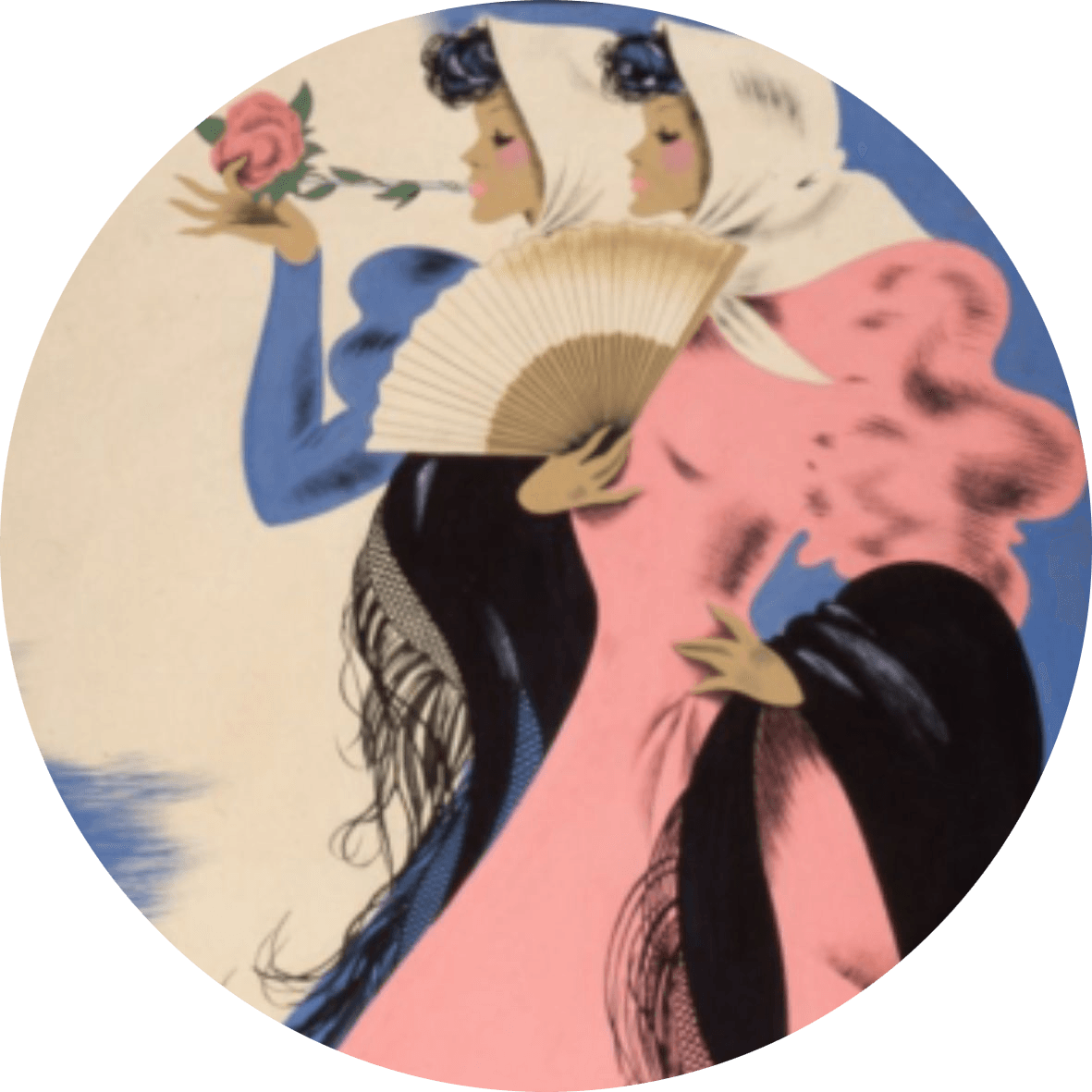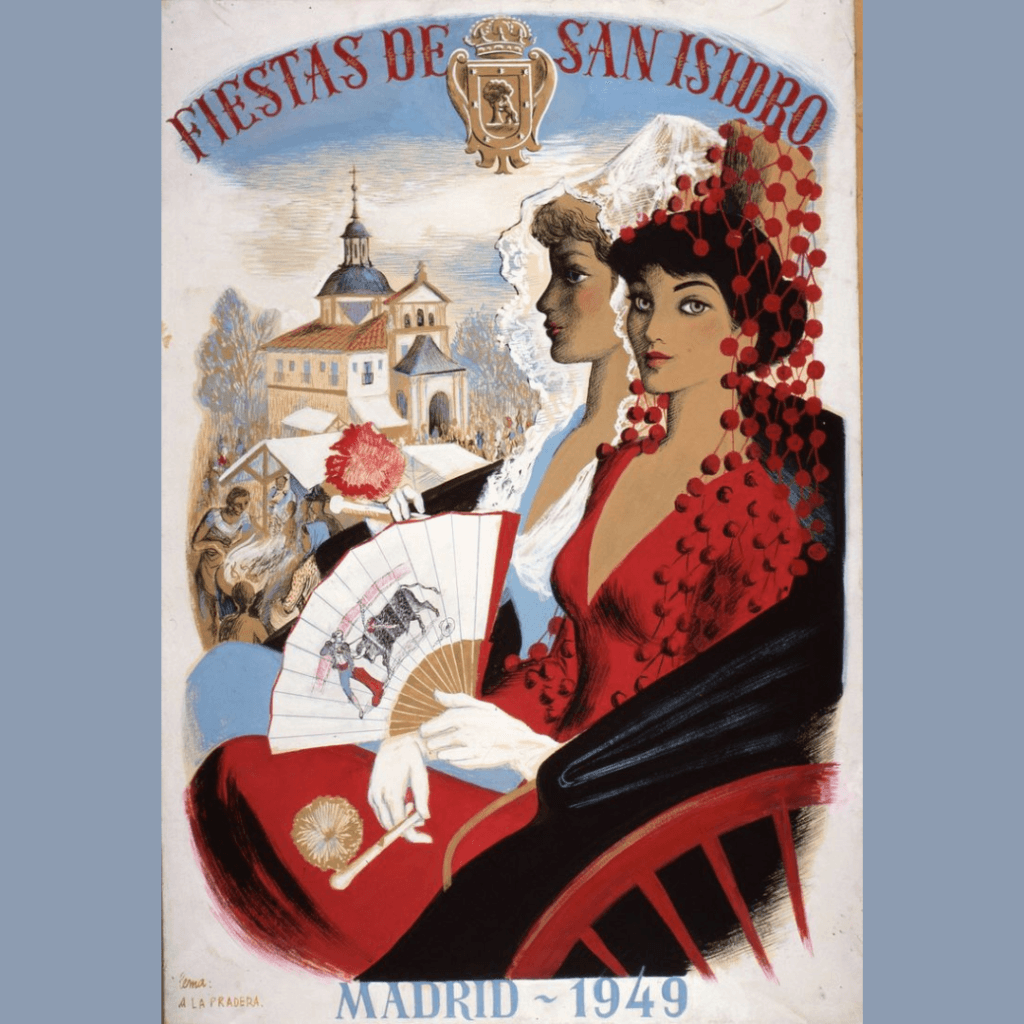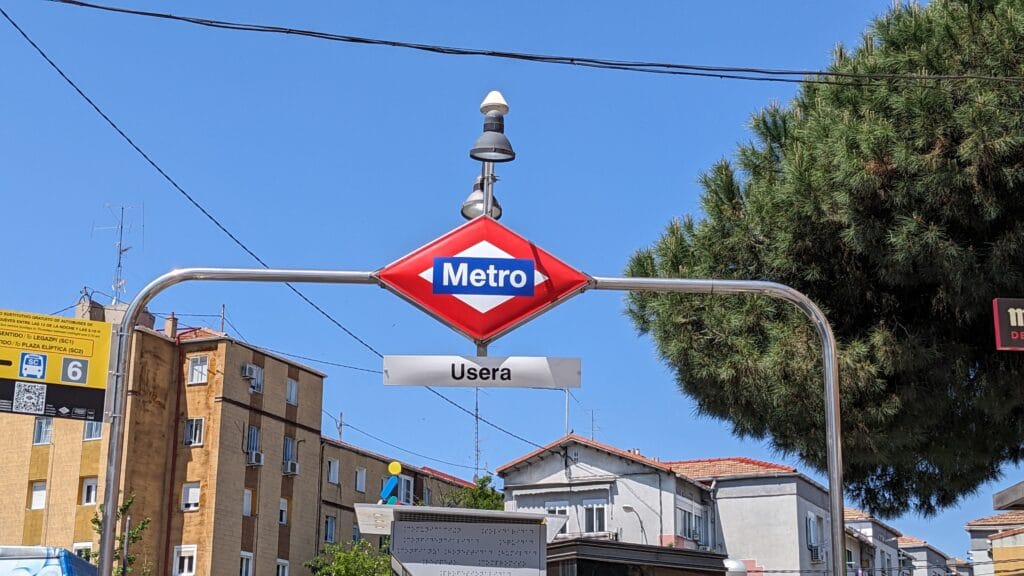
This is the first in a three-part series exploring Madrid’s Usera district. Look out for upcoming episodes/posts on “Things to Do in Usera” and “A Foodie’s Guide to Usera’s Multicultural Cuisine”!
In a city as historically rich as Madrid, it’s easy to focus solely on the grand boulevards and famous plazas of the centre. But venture just beyond the M30 ring road to the south, and you’ll discover Usera—a neighbourhood with a story that weaves through Spanish history while embracing a multicultural present that might surprise even seasoned Madrid explorers.
Humble Beginnings and Civil War Resistance
Unlike Madrid’s historic centre with its medieval roots, Usera’s story is relatively recent. The area takes its name from Marcelo Usera, a wealthy landowner who began developing the previously rural outskirts in the early 20th century. Walking through the barrio today, you’ll notice many street names connected to the Usera family, alongside distinctly religious ones—a reflection of the area’s evolution over time.
One of the first significant developments came in 1929 with the construction of a housing estate called “Colonia de Salud y Ahorro” (Health and Savings Estate). This Republican-era project aimed to provide decent living conditions for working-class residents, featuring modern amenities like electricity, gas, and proper sewage systems—revolutionary for its time—for more on Madrid’s colonias check out this post.
This working-class identity would prove crucial during the Spanish Civil War. When Nationalist forces attempted to take Madrid from the south at the beginning of the siege of Madrid in 1936, they met fierce resistance in working-class neighbourhoods like Usera. The area’s citizens, largely supportive of the Republican cause, fought back with determination. Today, you can still find bullet holes in some of the buildings of the Colonia—silent witnesses to this violent chapter in Spanish history.
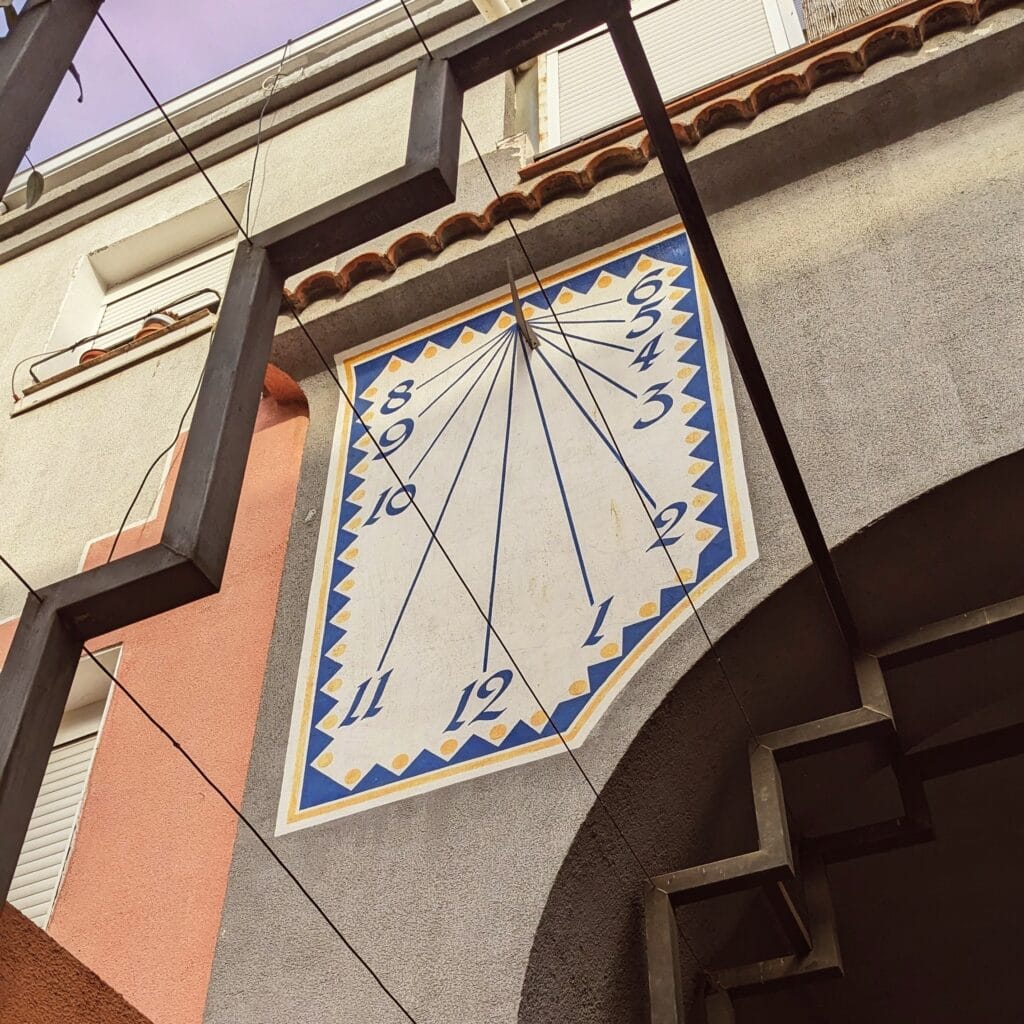
After Franco’s victory, the Colonia was renamed “Colonia de Moscaró” after one of Franco’s generals, a name that persists despite recent attempts to change it under progressive mayor Manuela Carmena. The area still maintains its architectural charm, enhanced in the 1980s with colourful facades and decorative sundials that you can explore on the city council’s free “Ruta de Relojes” (Clock Route) walking tour.
Post-War Transformation: From Shantytown to Social Housing
Following the Civil War, Madrid experienced a population explosion as impoverished rural communities flooded into the city seeking work. With nowhere to live, many settled in “chabolas” (shantytowns) throughout areas like Usera. These informal settlements lacked basic services like electricity, running water, and waste collection.
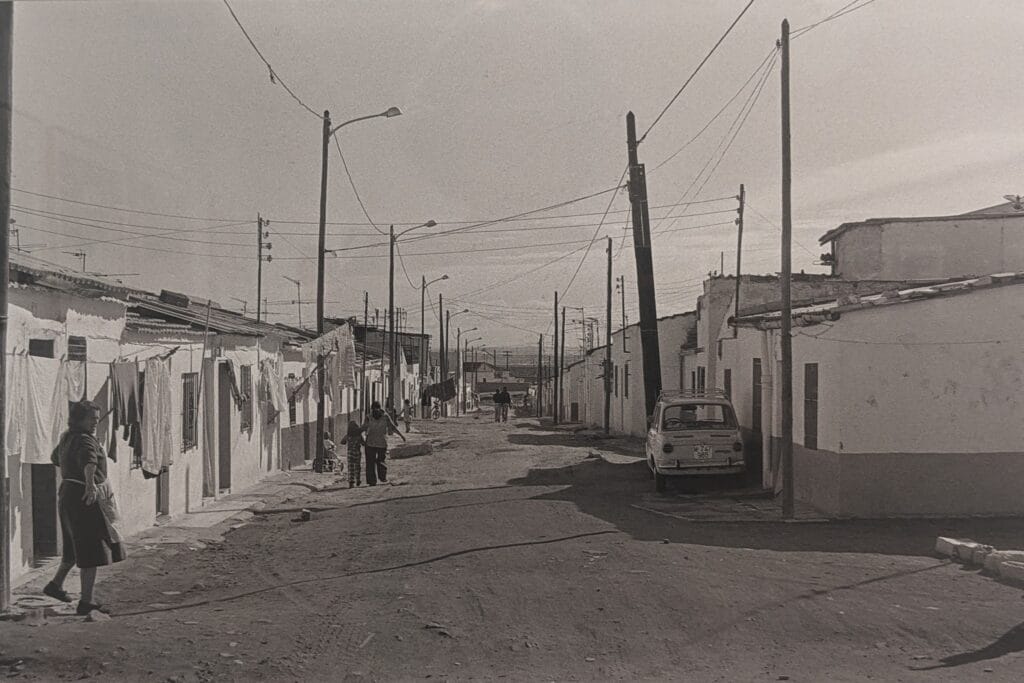
Over time, residents organised and fought for better conditions, eventually winning improvements and, ultimately, proper social housing. Many of today’s apartment buildings in Usera, including those with pleasant tree-lined approaches set back from noisy streets, were built in the 1960s to replace these shantytowns. In the video episode, you can see my own estate which is one of many like this. Not as pricy as the colonia, these apartment buildings are nonetheless increasingly popular.
Interestingly, Madrid still hosts Europe’s largest shantytown on the outskirts of the city—a social reality often overlooked by tourists but part of the complex fabric of the capital’s development. For more on Cañada Real, check out Leah Pattem’s work in the Guardian and her excellent blog, Madrid no Frills.
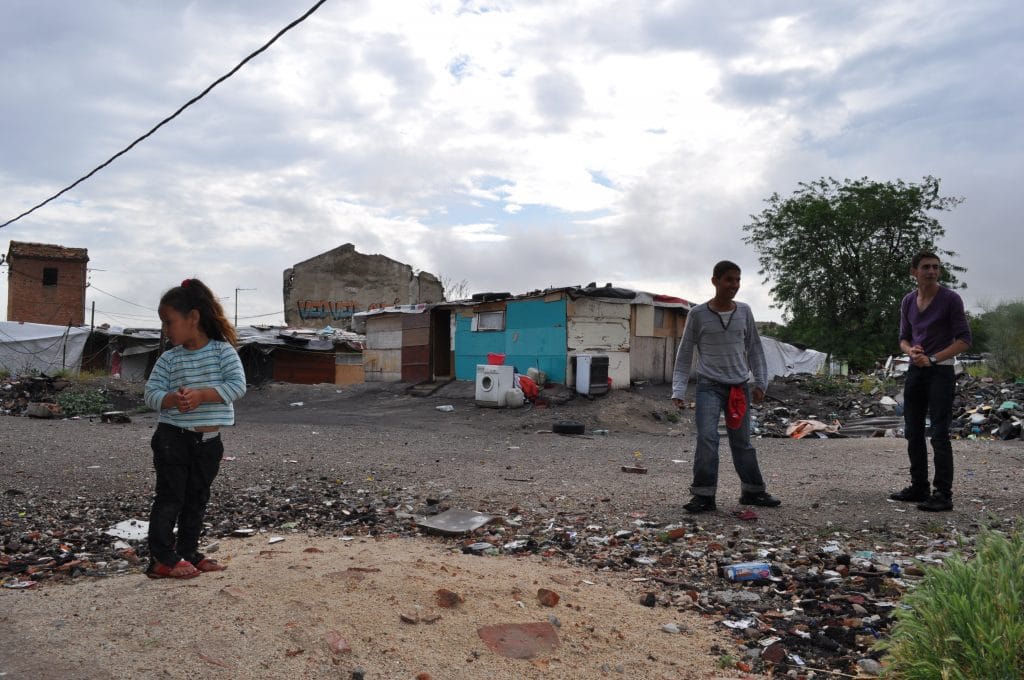
A Multicultural Mosaic
Today’s Usera is defined by its remarkable diversity. The neighborhood hosts a significant gitano (gypsy) community, particularly around San Fermin, near the Caja Mágica stadium. I live in the adjacent district of Almendrales and have often witnessed impromptu street performances of flamenco singing.
But what truly distinguishes modern Usera is its Chinese community—the largest in Madrid. On average, eight out of ten Chinese in Spain hail from Qingtian, a small city in Wenzhou, China. The connection is so strong that visitors to Qingtian today will find Spanish tapas bars and many residents with fond memories of Madrid.
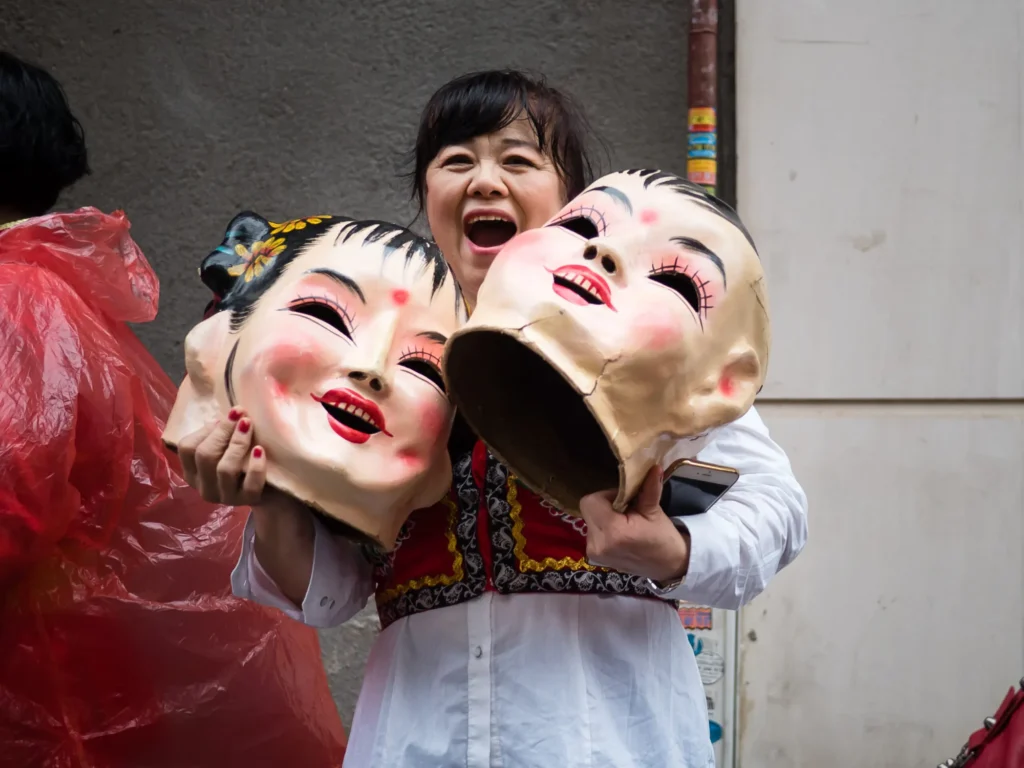
This Chinese presence has transformed Usera into Madrid’s unofficial Chinatown, complete with an annual Chinese New Year parade that attracts visitors from across the city. The celebration has grown exponentially in recent years, with streets filled with color and festivities that draw crowds from all over Madrid.
Artists and Gentrification: A Neighbourhood in Transition
As central Madrid neighbourhoods like Lavapiés have become increasingly expensive, artists have begun migrating to more affordable areas like Usera. Organisations like Espacio Oculto, a co-working studio and cultural centre, have established themselves in the neighbourhood, organising events like the annual “Puertas Abiertas” (Open Doors) festival that invites visitors to explore artists’ studios.
This artistic influx, combined with Usera’s excellent transport connections to the city centre, has begun to drive gentrification. Since I moved here a decade ago, property prices have more than doubled, and concerns about tourist accommodation and rising rents threaten to displace the very communities that give the area its character. While some of my neighbours talk of selling up and moving to España vacia (Spain’s emptied out countryside that is cheap but has few amenities), I’m sitting tight. Once you sell, returning is simply not an affordable option.
A Taste of What’s to Come
Usera’s story isn’t complete without mentioning its remarkable cultural attractions and culinary scene. The neighbourhood offers countless opportunities for exploration—from discovering hidden artistic spaces to sampling authentic regional Chinese cuisine.
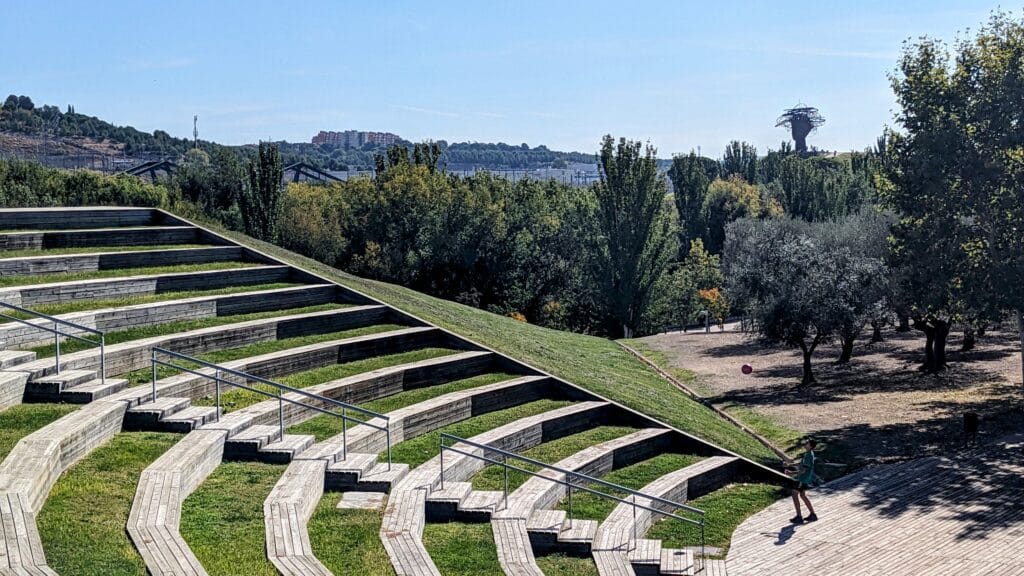
The almond trees that bloom spectacularly in March (giving the Almendrales section its name) and the colourful sundials of the Colonia de Moscaró hint at the visual treasures waiting to be discovered. Meanwhile, the aromas wafting from countless eateries suggest culinary adventures that range far beyond traditional Spanish fare.
Stay tuned for our upcoming guides to activities and restaurants in Usera, where we’ll dive deeper into the neighbourhood’s present-day attractions!
Looking Forward
Usera stands at a crossroads between preserving its authentic, multicultural identity and embracing development that could fundamentally change its character. The tension between these forces—gentrification versus preservation, tourism versus community needs—mirrors challenges faced by neighbourhoods worldwide.
What makes Usera special is precisely this in-between quality: not yet polished for mass tourism but rich with authentic experiences; historically significant yet constantly evolving; proudly Spanish while embracing influences from around the world.
For those willing to step just beyond Madrid’s traditional tourist boundaries, Usera offers a glimpse of the city’s complex past, vibrant present, and uncertain future—all within a single, fascinating barrio waiting to be explored.
Visiting Madrid and want to see a different side to the city? Then why not buy a copy of my new book Quiet Madrid, a guide to the tranquil spaces in hidden places dotted about the city.
